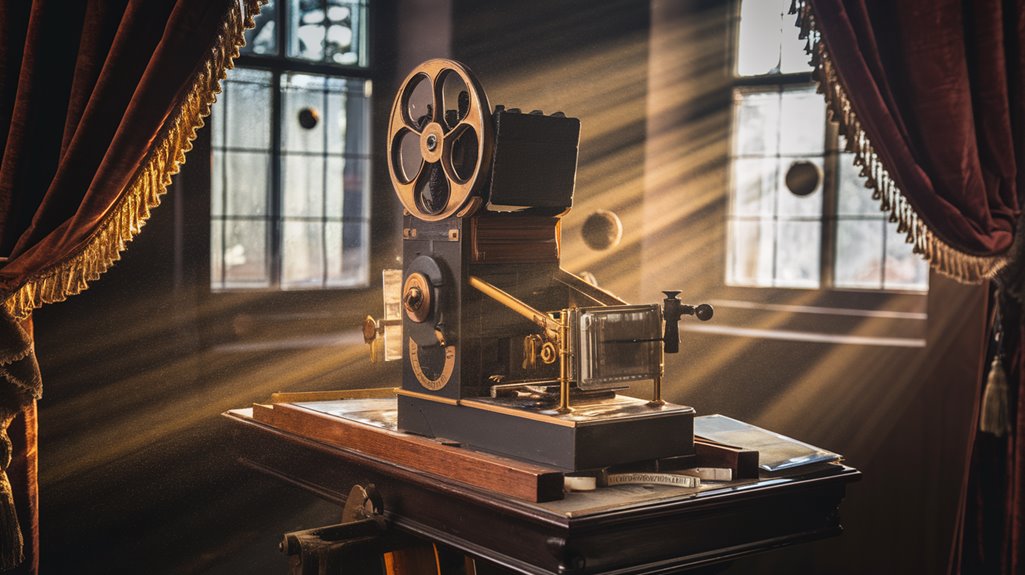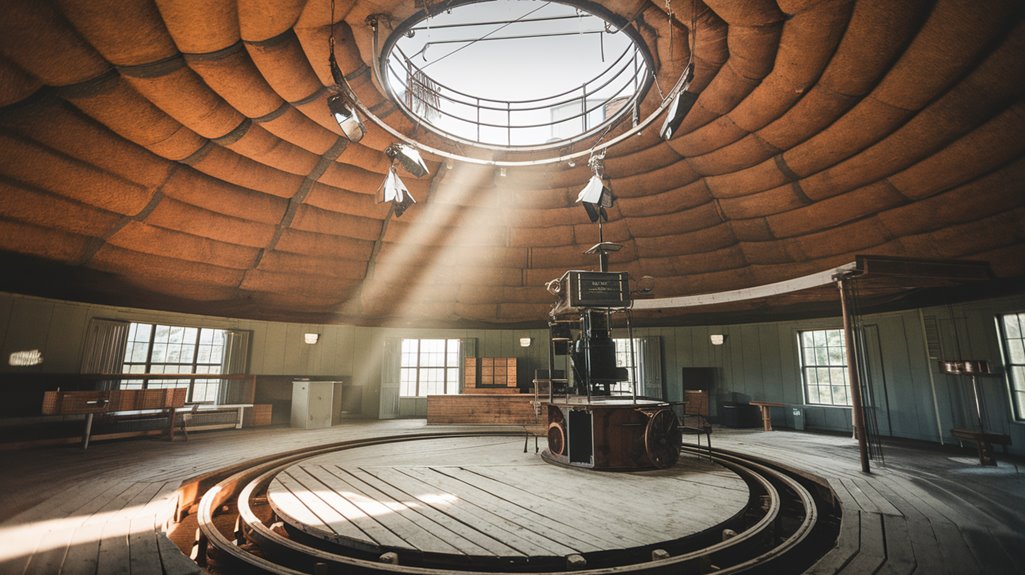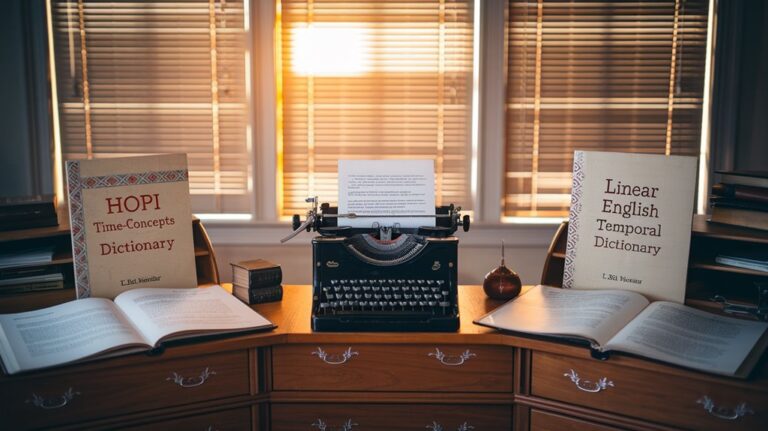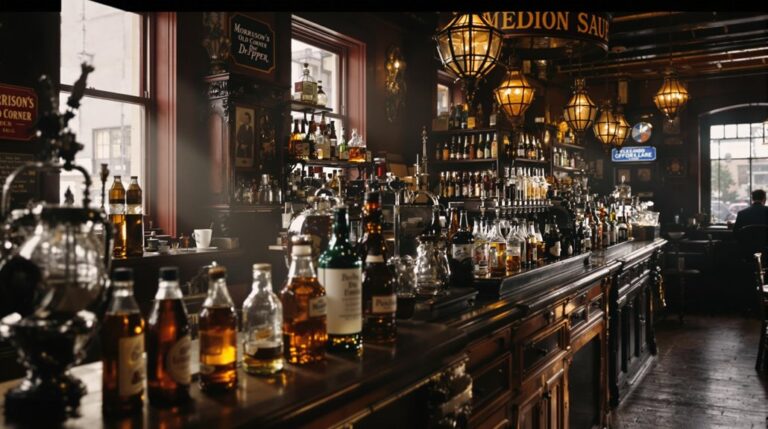The Forgotten First Film—and the Murder That Almost Killed Cinema
You've probably heard that Thomas Edison invented motion pictures, but you're in for a surprising revelation. Before Edison's name became synonymous with early cinema, a French inventor named Louis Le Prince created and filmed the world's first moving images in 1888. Yet, his remarkable achievement vanished into obscurity when he mysteriously disappeared from a train in 1890—a case that remains unsolved and suggests a darker plot behind cinema's contested origins.
The Mystery Behind Louis Le Prince's Disappearance
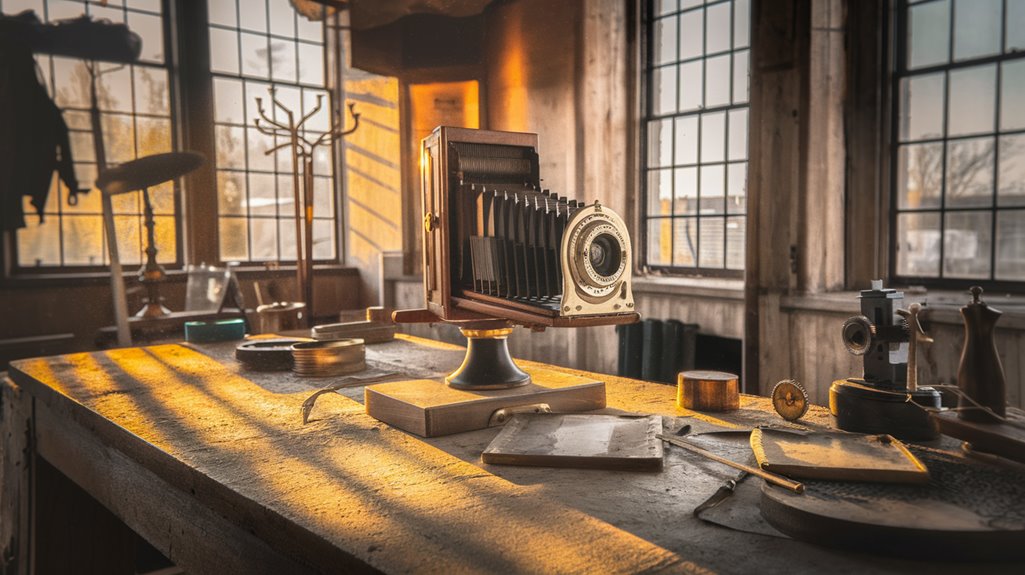
How could a pioneering filmmaker vanish without a trace? The disappearance of Louis Le Prince in 1890 remains one of cinema's most perplexing mysteries. After boarding a train to Paris from Dijon, France, he simply vanished—along with his luggage.
The investigation timeline reveals that both French police and Scotland Yard searched extensively but found nothing conclusive. A photograph of a drowned man resembling Le Prince emerged from Paris police archives, yet his body was never officially identified.
Multiple disappearance theories have emerged over the years: assassination by rivals like Edison to prevent his cinematography patents from succeeding, suicide due to financial troubles, or even kidnapping by competitors. His brother Arthur was the last person to see Le Prince alive before his disappearance. Some even suggest he joined the Foreign Legion to escape bankruptcy. Le Prince created the first authentic moving image with his groundbreaking film "Roundhay Garden Scene."
In 1897, Le Prince was officially declared dead, but the truth behind his vanishing remains unsolved.
The Birth of Roundhay Garden Scene: A Two-Second Revolution
Before his mysterious disappearance, Louis Le Prince left behind a revolutionary legacy: the world's first surviving motion picture. On October 14, 1888, he captured 2.11 seconds of early motion that would change the course of history.
Using a single-lens camera and Eastman's paper film, Le Prince filmed four people walking in the garden of Oakwood Grange in Leeds, England. His childhood connection to pioneering photographer Louis Daguerre greatly influenced his later innovations.
His cinematic experimentation, running at 12 frames per second, preceded the works of Edison and the Lumière brothers by several years. You can still see the historic scene's details: Sarah Whitley walking backwards, Joseph Whitley's coat tails flying in the wind. Tragically, Sarah Whitley died just ten days after participating in this groundbreaking moment in film history.
While brief, these captured moments transcend mere documentation, inspiring generations of filmmakers and earning recognition from the Guinness Book of Records as cinema's earliest surviving footage.
How Edison and the Lumière Brothers Claimed Cinema's Crown
While Louis Le Prince's pioneering work lay dormant, Thomas Edison and the Lumière Brothers emerged as the dominant forces in early cinema's evolution. Edison's innovations brought us the Kinetoscope, a single-viewer device that, despite its limitations, achieved commercial success in entertainment parlors worldwide by 1894.
The Lumière advancements, however, revolutionized the medium with their Cinématographe. The device required no electrical power to operate, relying instead on a hand-crank mechanism. This portable device could capture, print, and project films to multiple viewers simultaneously, making it far more practical than Edison's invention. The brothers grew up in a creative environment as their father Antoine was a painter turned photographer, which heavily influenced their path into imagery and cinematography.
You'll find a stark contrast in their approaches: Edison focused on staged indoor performances, while the Lumières captured real-life scenes outdoors. Their historic first commercial screening in December 1895 at Paris's Grand Café marked a turning point, though debates persist about who truly deserves credit for cinema's invention.
Le Prince's Groundbreaking Single-Lens Camera Innovation
The true origins of cinema predate both Edison and the Lumières, tracing back to Louis Le Prince's revolutionary single-lens camera in 1888.
You'll find the camera mechanics of his invention remarkably advanced for its time, featuring a dual-lens system with separate viewfinder and photographic capabilities, plus an adjustable focus lever.
Working from his Leeds workshop, Le Prince built this groundbreaking device using wood and metal, achieving a framerate of 5-7 frames per second with Eastman's paper film. The camera came with a specially designed wooden box for storage and transportation.
He captured history's earliest moving pictures, including the famous "Roundhay Garden Scene" and "Leeds Bridge" sequences. His accomplishments would later be championed by his widow and son Adolphe who fought to protect his legacy against Edison's patent claims.
Thanks to film preservation efforts, you can still witness these pioneering moments today at the National Science and Media Museum, where Le Prince's daughter Marie safeguarded his legacy by donating the remaining equipment in 1931.
The Lost Legacy: Why History Forgot the First True Filmmaker
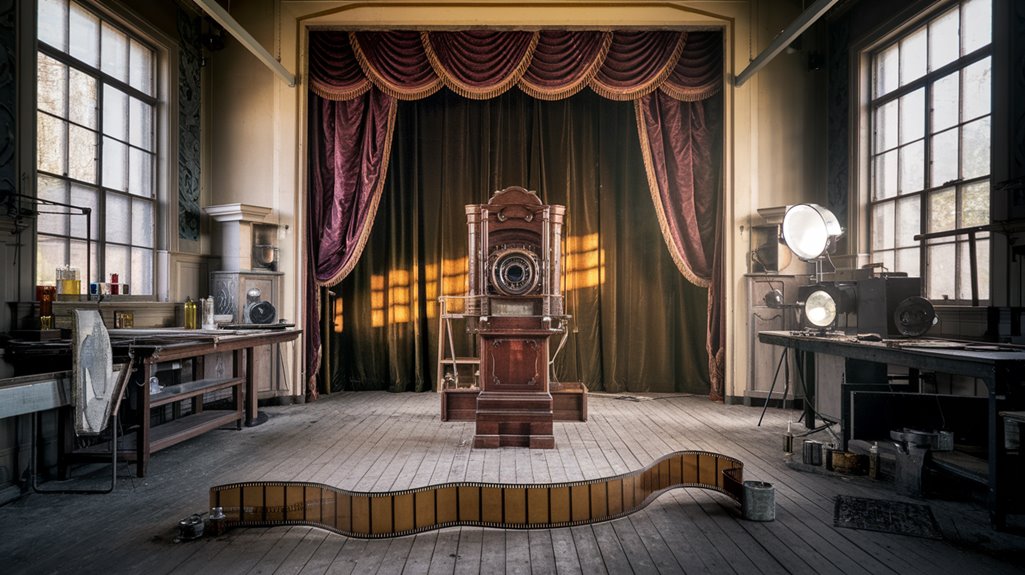
Despite his revolutionary contributions to cinema, Louis Le Prince's legacy faded into obscurity following his mysterious disappearance in 1890. You might wonder how history overlooked the creator of "Roundhay Garden Scene," the first true motion picture captured with a single-lens camera.
Several factors contributed to Le Prince's forgotten status. His sudden vanishment prevented him from showcasing his groundbreaking work to the public. Like the early pioneers who used the camera obscura for creating images, Le Prince's innovative techniques laid crucial groundwork for future filmmaking. The Lumière Brothers would later make history with their Cinématographe invention, which enabled both production and public exhibition of films.
Meanwhile, the Lumière Brothers' subsequent success and widespread recognition overshadowed his achievements. The challenges of film preservation in the early days of cinema made it difficult to maintain and showcase Le Prince's work, while competing claims from other pioneers like Thomas Edison and Eadweard Muybridge complicated historical recognition of his innovations.
It wasn't until years later that film historians began acknowledging Le Prince's pivotal role in cinema's birth.
From Leeds to Hollywood: Rewriting Cinema's Origin Story
Moving pictures may have found their ultimate home in Hollywood, but cinema's true origins can be traced to the bustling city of Leeds, England. In 1888, Louis Le Prince forever changed history by filming the world's first successful moving pictures at Leeds Bridge and Roundhay Garden, running at 12 frames per second on his pioneering single-lens camera.
While Edison's company and the Lumière brothers would later claim cinema's invention, Leeds' heritage as the birthplace of film is now being rediscovered. His tragic disappearance on September 16, 1890 prevented him from showcasing his innovations to the world.
Filmmaker David Nicholas Wilkinson spent over three decades proving that the world's film industry started with his city's cinematic pioneers. Since then, Leeds Castle has built upon this legacy, with its first motion picture If Winter Comes filmed there in 1923.
Today, Le Prince's groundbreaking work is preserved at Bradford's National Media Museum, and his innovative cinematic eye has finally earned recognition from the British Film Institute, cementing Leeds' place in movie history.

